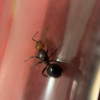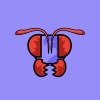Claustral Formica
Formica fusca group
Formica pallidefulva group
Abstract
Two of the most successful Formica species groups in North America are the fusca group and the pallidefulva group. They can be found in most any environment, from urban concrete jungles, suburban backyards, farmland, and especially nature parks. Though the fusca group is more common, the pallidefulva group still is dominant in many pockets of fields throughout the Midwest. These ants are large, fast-growing, fast-moving, and aggressive. They utilize a potent formic acid spray which they use both for nest defense, disinfecting their nest, and immobilizing prey. They often build conspicuous, mound-shaped nests which help trap solar energy and heat, in which they often store their pupae during hot summer days to hasten their development. As Ants_Dakota eloquently points out in his journal, Formica is a diverse, fascinating genus which has long been overlooked in the community. This journal aims to bring Formica into the spotlight and document the colony rearing process of these outstanding ants.
Resources
Journals:
Articles:
Formica species groups - AntWiki
Key to North American Genera of Formicinae - AntWiki
Formica pallidefulva - AntWiki
Update 1
August 8, 2024
Introduction
Over the weekend of the fourth of July I vacationed in Nebraska City, NE which has decent forest cover due to its proximity to the Missouri River. The first day on the 4th I caught a Formica pallidefulva group queen which I will dub as cf. incerta, bright orange. On the 6th I caught another queen, similar but darker in coloration, and I will call it cf. pallidefulva.. The week after I came back I found a smaller Formica fusca group queen in a parking lot here in Sioux Falls. Then again last Sunday another larger fusca group queen landed on my car's windshield.
Formica cf. pallidefulva
Of the Nebraska City queens this one is doing the best. She just got nanitics, with three callows and three more pupae on the way. After she got workers she immediately laid 10-12 eggs. The queen is noticeably smaller and of darker complexion than the other pallidefulva group queen.







Formica cf. incerta
I absolutely love the colors of this queen. While the other pallidefulva group queen is beautiful in her own way, I find this one's orange and red color scheme with stripes absolutely stunning. She definitely isn't doing as well worker-wise, but at least she's fertile. She just got her first worker, with two more on the way. She has one larva and one egg. Hopefully she lays more soon.



Formica cf. podzolica
I accidentally dented this queen's abdomen during collection, though it doesn't seem to be affecting her. She laid eggs and had two large larvae. However, when I checked on her one week she ate them. She now has 3-4 eggs again.





Formica cf. argentea
This queen landed on my windshield, as previously mentioned. She's a larger fusca group, probably argentea or subsericea. I'm leaning towards argentea due to her rubrous (red) legs. She laid 7 eggs within this first week and a half of having her. Her abdomen is quite plump and healthy-looking, so I have high hopes for her as well as the cf. pallidefulva.





Edited by RushmoreAnts, March 22 2025 - 12:07 PM.
































![[CA] Looking for Formica (can buy/trade) - last post by bmb1bee](https://www.formiculture.com/uploads/profile/photo-thumb-6841.jpg?_r=1649821237)




